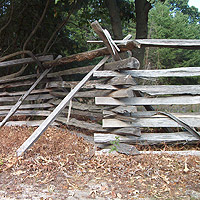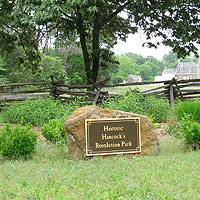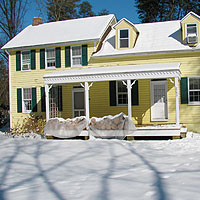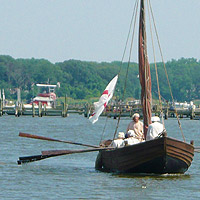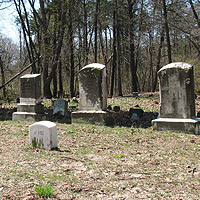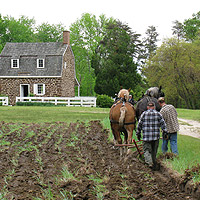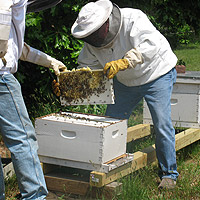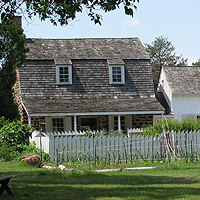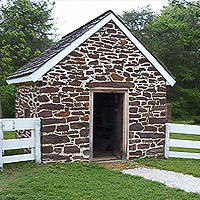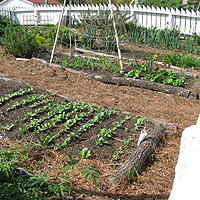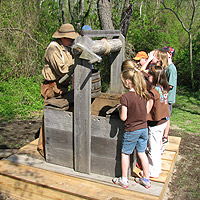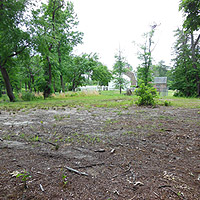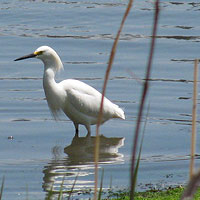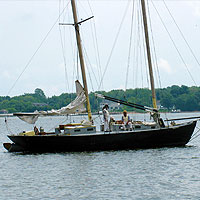
Public Hours
April through October
Sundays 1-4 PM (except Easter)
Extended hours based per event.
Explore
About the Farm
Hancock Family
Photo Gallery
History
Events Calendar
Upcoming:
Spring Plowing
May 4, 2025
MOTHER’S DAY TEA AND INTERPRETING HISTORIC WOMENS’ CLOTHING
May 11, 2025
MEMORIAL DAY
May 25, 2025
JUNE 1, 2025 – OPEN FOR TOURS
June 1, 2025
LAVENDER APPRECIATION DAY
June 8, 2025

Prepping Hancock’s for the Spring Opening
For many years Jim Morrison, Bill, and occasional help tried to complete this list of tasks before Hancock’s opened each year. This list has been updated to the current year’s needs. 2/1/2025
Barn/Visitor Center
- Sweep
- Floor
- Walls for Cobwebs
- Clean Windows and wipe Windowsills and Window casings with damp cloth
- Dust Desk and Contents
- Dust & wipe artifacts and displays
- Return stored items to displays
Main House
- Sweep
- Floor
- Walls for Cobwebs
- Clean Windows and wipe Windowsills and Window casings with damp cloth (inside and out)
- Dust & wipe mantel and wood encasement with damp cloth
- Dust Desk and Contents
- Dust Spinning Wheel
- Dust & wipe Bed with a damp cloth (you may have to remove some of the slats to reach the headboard)
- Dust / Clean Map in frame
- Restore packed artifacts to displays
- Vacuum floor
Main House Second Floor
- Sweep:
- Floor
- Steps
- Window Cases
- Cobwebs from wall and ceiling
- Vacuum
- Floor
- Steps
- Clean Windows (be careful of loose and cracked panes)
Cellar
- Rake dirt floor
- Remove Cobwebs
- Sweep Steps
- Remove Cobwebs from steps, stone walls and under steps wooden cover
Hyphen
- Sweep Floors
- Vacuum Floors
- Clean Window
- Clean Items in Hyphen (both sides): Yarn Winder, Garden Tools, Games
- Organized items in Hyphen
Kitchen
- Sweep Floor
- Return stored items to displays
- Wipe table and cabinet items with damp cloth
- Organizes table and cabinet items
- Vacuum floor
- Scrape whitewash and white stain from window glass
- Clean windows
Kitchen Second Floor
- Sweep Floor
- Sweep Steps
- Vacuum Floor and Steps
- Clean window
Summer Kitchen
- Scrape whitewash and white stain from window glass
- Clean windows
- Wipe window frames and sills with damp cloth
- Rake dirt floor
- Return stored items to displays
Milk House
- Carefully remove items (saws and ax)from shelves and floor to outside
- Dust shelves
- Wipe shelves with a damp cloth
- Restore packed items to displays
- Dust Milk House items
- Return Milk House items to shelves and floor
Store
- Dust shelves
- Clean shelf and floor items with a damp cloth
- Clean cabinet shelves (two cabinets)
- Clean cabinet glass
- Return stored items to cabinet shelves and organize items
- Sweep walls and rafters to remove cobwebs and dust
- Sweep floor
- Vacuum floor
- Scrape whitewash and white stain from windows
- Wash windows
Morton Building, Bill
- Sweep floor
- Organize items on and under tables
- Organize items on desk
- Prepare Lawn Mower (Oil, Spark Plugs), Tractor (Battery, Oil, Tires, Engine) small and large Golf Cart (Batteries and Tires) for the season
Trails
- Walk the trails and report any debris
Old Well – When the Well is repaired
- Open Old Well’s box.
- Draw several buckets of water from the well to check the quality of the water.
- Close Old Well
Hand Pump, Bill and Recs and Parks
- Inspect hand pump’s inner leather parts (repair as needed)
- Remove one of the hand pump’s platform boards to access the hand pump tank’s valve used to empty the tank.
- Close hand pump tank’s valve (located at the base of the tank under the hand pump)
Gardens Thank you, Nancy – ask for help if needed
- Nancy
